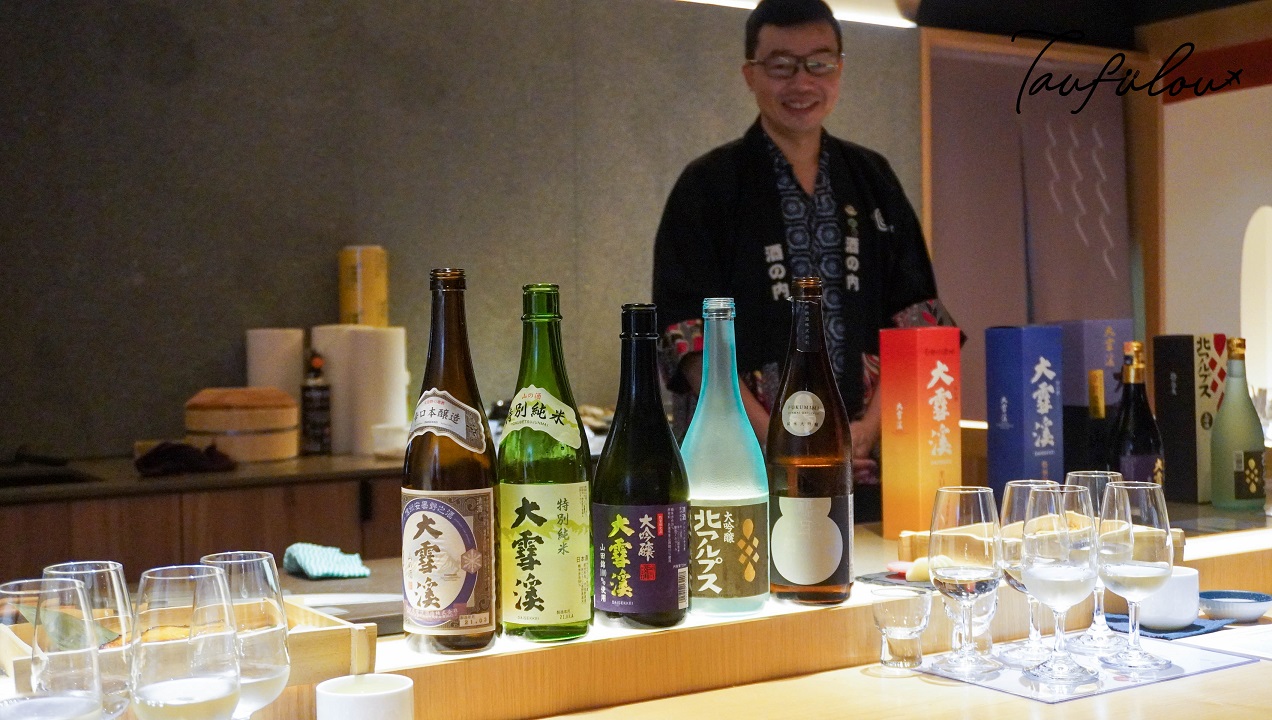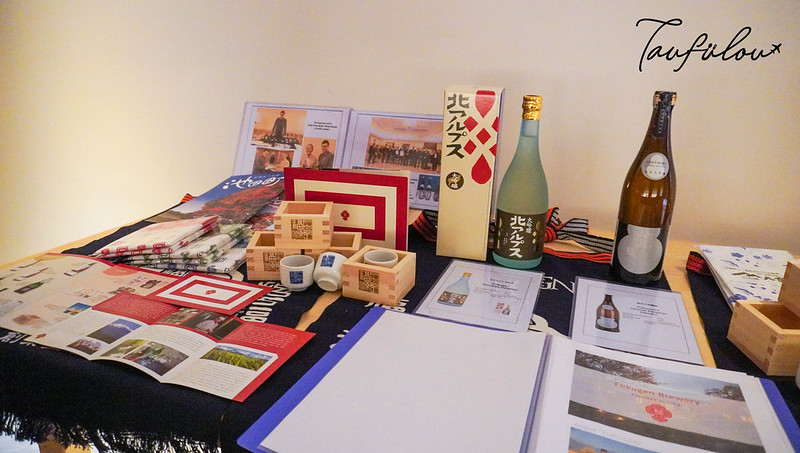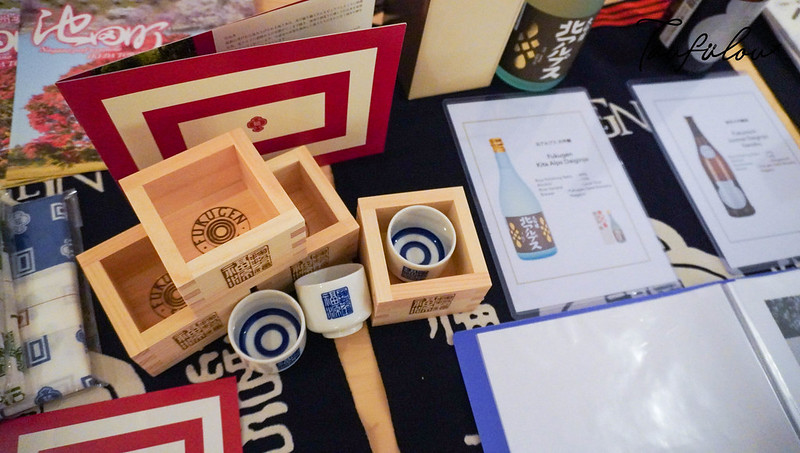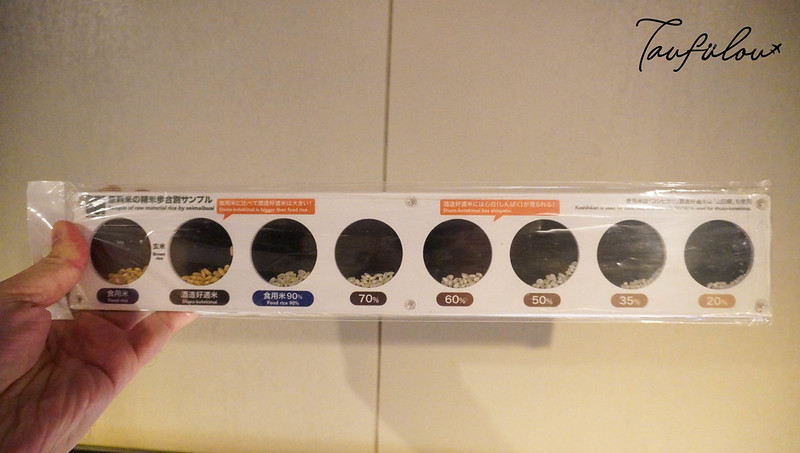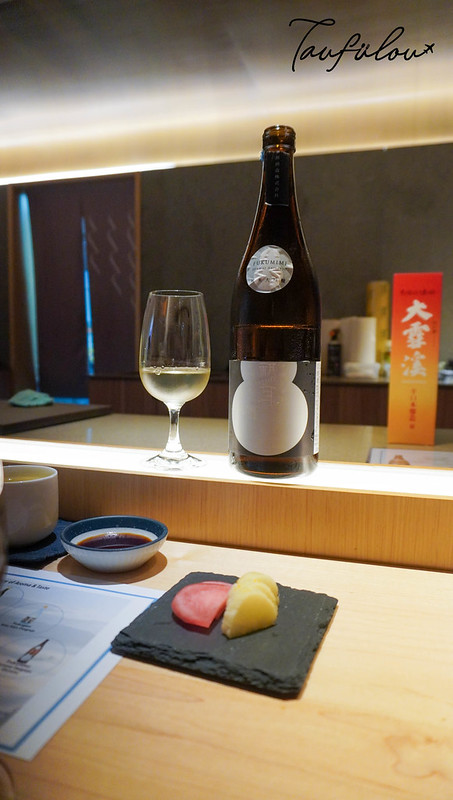Sake that looks like purity of a water is one of the hardest to make. It looks so simple yet the process of it is so complicated. Sake is a signature icon in Japan. Every province have their own specialty and signature. In heart of Japan lies this small province Ikeda Town that have 2 sake brewery know as Daisekkei Sake Brewery and Fukugen Shuzo.
Rise from this small town, yet both of the taste is so huge different.
Not only coming small from the town, this boutique brewery Fukugen is more than 350 years old that founded in 1758 has earned many top honors in the National Sake Appraisal competition, a medal at The International Wine Challenger (IWC) and has been selected SAKE for the Sake for the 21st Century by the Maestro of Sake Tasting.
What makes this province have such a unique taste with award winning. The town are enjoying mineral waters from n Northern Japan Alps provides Fukugen with the most appropriate water for sake production . As the ice top melts from the top of the mountain, flows the water from the top all the way to the river. The water are being used to make sake. With long historical art of brewing and skilled artisan that continue the traditions to preserve the sake brewing formula.
Fukugen’s sake is brewed using healthy brewer’s rice grown with minimal pesticides and the cold, clear spring water from the Northern Alps, with brewmaster techniques that have been passed down for over 360 years.
In this meet up, we are honor to meet the Ikeda Town Mayor (Mr Kiyoaki Motai) Daisekkei Sake Brewery, Senior Managing Director (Mr Yuuki Usui) Fukugen Shuzo, General Planning Department (Ms Seiko Hirabayashi 18th Generation Owner). Sharing their passion both from the Town Mayor and also brewery masters.
Founded in 1898, Daisekkei Sake Brewery (Ikeda Town, Nagano Prefecture) at the foot of the Northern Alps, continues to produce sake using melt-water that can be enjoyed at ordinary dining tables. Since it is a mountainous region, there is a large difference in temperature between daytime and night in summer and winter, and as such it is an environment suitable for making rice used for sake. Being blessed by nature, we value the difference in taste five to ten years down the line, and our commitment and attitude to continue making good sake at a high cost cannot be imitated overnight. In 1953, it won the highest award at the National New Sake Awards Ceremony and was selected to be presented to the Imperial Household. In 1966, the chief brewer at the time received the Yellow Ribbon Medal (given to those who have devoted themselves to the work of agriculture, commerce, industry, etc., and have other exemplary skills and achievements).
The sake is named after Mt. Shirouma, one of Japan’s three major snowy valleys, and represents the awe for the mountains and great nature that we look up to every day. The clear air, pure water, abundant rice, and harsh colds of winter that nature creates, all nurture the sake of this region.
As Master Saké Sommelier and saké and food pairing specialist, Danny shared with us on the area that produces the rice are cultivate organically. that enjoys natural resources as water and weather like deep winters and cool summers, with majestic mountain vistas of the Northern Japan Alps. The people of this region take great pride in the richness of their natural surroundings of the Nagano prefecture, host to the 1998 Winter Olympics.
Different types of rice being used to brew sake.
Sake from the same province. Blown me away with the huge difference in taste. to start off with, we have to kick start with from Left to Right as where the flavours of sake building from the lightest to the heaviest. which is the first 3 bottles is from Daisekkei and last 2 bottle is from Fukugen.
We are lucky today as the sake were bottle end of March and we get to taste it first hand. It is like drinking sake from the province.
This is our tasting platter for the day.
Bottle 1: Daisekkei – Karakuchi Honjozo. The clarity of it is near to crystal water but the movememnt is slightly heavy where you can see the presence of the alcohol. A bottle that can pair easily with any fresh sashimi or food. The light cripsy body texture is there.
Bottle 2: Daisekkei – Tokubetsu Junmai is one of my favourite bottle. One of the reason of this amazing bottle is that, if you drink in hot, room temperature and cold, it gives you 3 different flavours profile. It is just amazing that how this master brewer able to build the proflile of this in such a huge variance. I find that this is best to drink hot, where you can get to taste clarify, mild body crips and thin paper layer of floral.
A perfect bottle for you and your friends to those who prefer to drink hot or cold. A bottle that brings 2 worlds of preference together.
Bottle 3: Daisekkei Daiginjo Yamadanishiki is my favourite bottle of the night. I find that this bottle is very universal. that can easily pair with any food. If pair with saashimi, I find it brings sweetness from the fresh and floral of the sake that blends well. If you pair with meat, it goes perfectly well too. It makes the meat juicy yet can separate the flavours in your mouth. Eating with the pickled raddish, it brings a perfect balance of the hint of sourness and sweeness together.
Bottle 4: Fukugen Kita Alps Daiginjo as the serires which is award winning. The sake definately brings different dimension to your palate. It is like drinking aged wine, perhaps 2012/2013 years. Sake body is slightly heavy yet it is so easy to drink. Hint of sweetness notes is presence first follow by the slightly burnt rice flavor.
This is the master flavour of all. Bottle 5 : Fukumimi Junmai Daiginjo Genshu is the most heavy flavour among the 5. I find that either you like it or do not like it. The taste for this is quite drastic and when after you drink this bottle and you drink back the first bottle, you could not taste the freshness of the taste anymore.
Nihon Tsukemono – Pickled Daikon as Master Saké Sommelier specialist Danny taught us to be explorative with our palate. By biting abit of pickled radish then drink a sip of sake. You will be mesmerize how this pickled change the flavour of each sake that you are drinking with after you bite abit of radish.
Gindara misoyaki – Japanese Styled Grilled Cod Fish. fish that cook to perfection with glazed kind like miso on the too. Every bite is filled with explosive of flavours when you pair with the sake. I like it most with bottle 2 and bottle 3.
Wagyu to Kinoko Isote : WagyuA5 with Saute Mushroom
I never really like oyster in big size. I find that it is too moist. However Nagasaki Nama Kaki : Fresh Oyster from Nagasaki I am going to give this a highway green light. The meat is not so soft yet solid. It was only 3 days old from Japan. The freshness is absolutely top notch and the meat is sweet!!! Drink with hot sake of bottle 2 is the best pairing on my personal thought.
However for clarity it does goes well with bottle 1 and bottle 3.
Mukimi Shiro Ebi to Kampachi Sashimi : White Shrimp and Yellow Tail Sashimi as for this. Need not need to say. Bottle and 2 is the best pairing.
As for some of you out there, was wondering which bottle should I buy. I would recommend:
- Bottle 2 for universal easy drinking that suits your mood from cold to warm.
- Bottle 3 is for easy drinking or any food pairing as it is very universal. I think might goes well with dai chow also.
- Bottle 4 is a bit stronger in taste of its own. But after drinking a while it had its unique unique palate
- Bottle 5 is the most unique of all. If you want weird, unique yet strong in taste with perfect smooth body then this is the bottle for you to hunt for.
